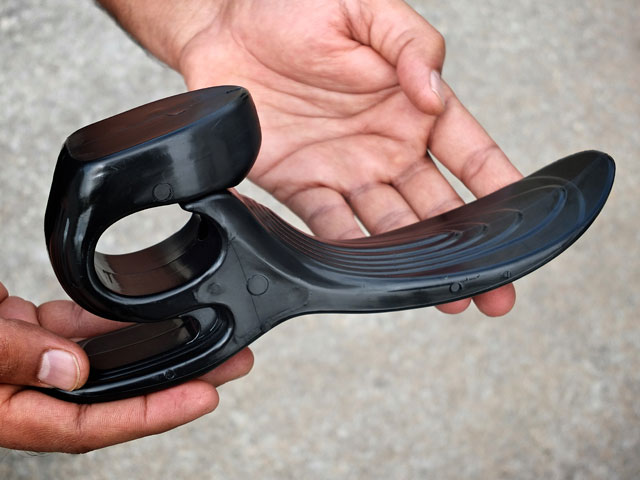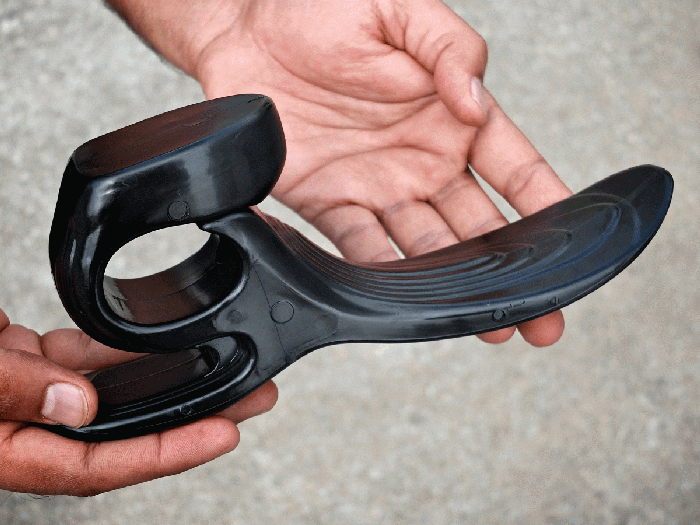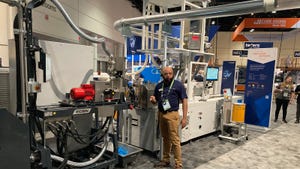New technologies revolutionize prosthetic devices
Better materials, manufacturing approaches and electronics are rapidly improving the quality of prosthetic devices, making them more responsive, more comfortable and better looking.It's a development that could improve the quality of life for large numbers of Iraq and Afghanistan war veterans, as well as many thousands more around the world who have lost limbs as a result of land mines, natural disasters or illnesses, such as diabetes.
May 30, 2012

Better materials, manufacturing approaches and electronics are rapidly improving the quality of prosthetic devices, making them more responsive, more comfortable and better looking.
It's a development that could improve the quality of life for large numbers of Iraq and Afghanistan war veterans, as well as many thousands more around the world who have lost limbs as a result of land mines, natural disasters or illnesses, such as diabetes.
|
Elastomeric device mimics biological foot action. Photo: DuPont |
One example is a prosthetic foot—called the Rhythm Foot—made with Hytrel thermoplastic polyester elastomer, a material that combines the flexibility of elastomer with the moldability of thermoplastics.
The foot anatomically mimics biological foot action and can be adjusted to fine tune its performance-a big difference from existing prosthetic feet. The foot is intended for use as a permanent option or as an interim prosthesis for the shower, swimming or for post-operative use.
"There are more than 20 million people without lower limbs who could benefit from this type of foot—the challenge was affordability," said its inventor, Rob Gabourie, a Canadian prosthetist and the owner of Niagara Prosthetics and Orthotics International Ltd. (NPOI), based in Ontario, Canada.
Tested in El Salvador
Researchers at the Human Mobility Research Centre at Queen's University and Kingston General Hospital also were part of the team of people and organizations that collaborated on the development. They conducted laboratory tests and, in partnership with the Universidad Don Bosco in El Salvador, coordinated a number of field trials to refine the foot and to confirm its effectiveness in use.
It won the gold award in the rehabilitation and assistive-technology products category at this year's Medical Design Excellence Awards (MDEA).
In another development, additive manufacturing creates the potential to produce custom-made prosthetics in hours from plastics or metals. In the additive manufacturing process, three-dimensional forms are produced one tiny layer at a time through a process driven by computer-aided designs.
A company called Bespoke Innovations, which was founded in 2009 by an orthopedic surgeon, combines 3D scanning and 3D printing (additive manufacturing) to create specialized coverings that surround an existing prosthetic leg. The concept won a 2011 gold design award from the The Industrial Designers Society of America (IDSA).
3D acquires Bespoke Innovations
3D Systems, the company that invented additive manufacturing in 1986, this month acquired Bespoke Innovations, putting technology and financial muscle behind the concept.
"This is an exciting and timely development that fuses together essential Bespoke and 3D Systems technologies to deliver an expanded range of life-enhancing, cost-effective treatments for the benefit of patients and providers alike, within existing insurance reimbursement codes," said Scott Summit, co-founder of Bespoke Innovations.
Abe Reichental, president and CEO, 3D Systems, said: "We plan to fast-track additional Bespoke products to market and to enhance their affordability and availability through our technology and manufacturing infrastructure."
Another enabling technology to make prosthetics more personalized is microprocessors, which have largely replaced analog circuits in prosthetic devices. Clinical trials are under way for motorized limbs that allow rapid movement. In the future, they could even be guided by neural action, the way natural limbs work.
You May Also Like


